Crepuscular and Anti-Crepuscular Rays - Sky Colours and Sunrays
What is there not to like about twilight?
It is that wonderful time of day when we see the transition between day and night and, if the conditions are just right, nature can put on a beautiful show of colour and light sure to brighten even the coldest of hearts!
Prior to the onset of twilight we most often think of sunset and the sometimes beautiful and evolving colours of red and orange that are a delight to see. Those of us who rise early in the morning can, of course, see the same thing in the lead up to sunrise, just in the reverse order.
The richness of these sunset colours is largely determined by the amount of suspended fine particulate matter in the atmosphere – dust, smoke, humidity and general pollution. The blue light from the sun is readily absorbed by our earth’s atmosphere and more so as we look towards the horizon where in line of sight the atmosphere is thicker. The red light more easily passes through all of this muck in the air and so we see a red sunset (or sunrise).
Clouds are also an essential ingredient to make for a potentially spectacular sunset and the red sunlight is reflected off the underside of clouds can make it all truly wonderful experience. But there are also other sometimes not too subtle features often overlooked and that can be readily seen around sunset.
But before we get too carried away with looking towards the sun it is so very important to remember that under normal circumstances the sun is far too bright to look at and extreme care must therefore be taken. It is far too easy to incur permanent eye damage (so-called after image) on the retina when looking at a bright light and the sun is an extremely bright light. Also, those overpriced brand-name “sunnies” are simply not up to nor intended for the task. Our eyesight is far too important – so just don’t risk even a presidential glimpse at the sun!
When the late afternoon sun is totally obscured by cloud it is common for rays of light to be seen radiating outward past the irregular edge of the cloud. These sunrays can be traced back and point to the location of the sun behind the cloud, as shown in Figure 1 on a hazy afternoon near the town of Cervantes on the coast of Western Australia.
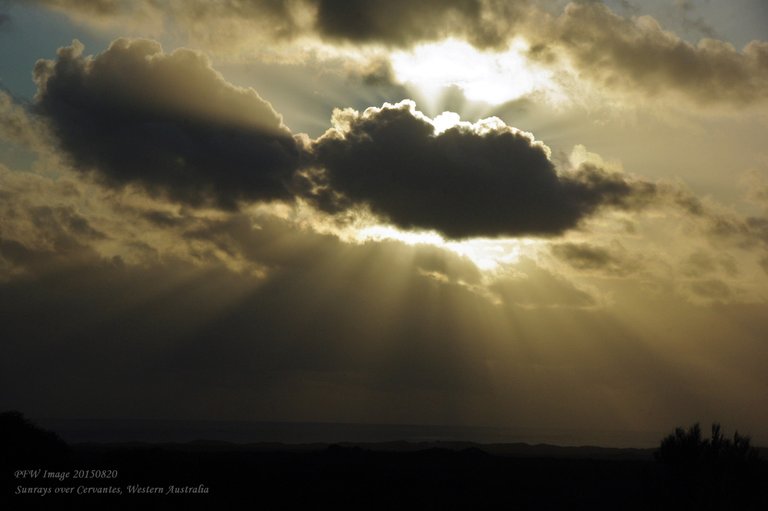
Bear in mind also that the bottom of the cloud is darker, almost gloomy or black in some cases, such as we often see when storm clouds are rolling in. The bottom of a cloud is dark not because of some evil force of nature lurking within but simply because the cloud is too dense for the sunlight to pass through so we are actually seeing nothing more scary than the shadow of the top of the cloud projected onto the bottom.
Sunrays can, of course, sometimes be seen during normal daylight hours if the conditions are right – and you just have to look at the right time. For example, the photo in Figure 2 shows a sunray streaming from the Eiffel Tower – the shadow of the Tower seen under clear but hazy conditions.
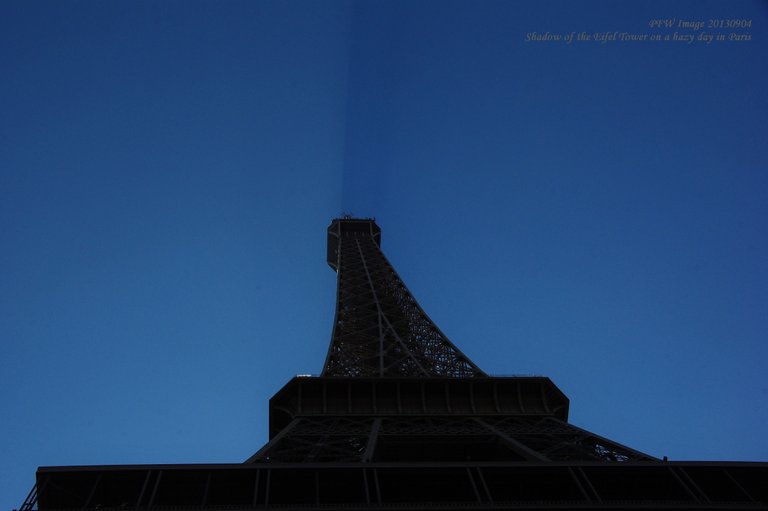
As the sun sets at the prelude to twilight, and if the sky is clear and free of clouds but there are fluffy cumulous clouds present along the horizon where the sun has just set, it is possible to see rays of light that appear to radiate outward from where the sun is lurking just below the horizon. A rugged horizon of distant mountains or landforms can also produce the same effect but their visibility in all cases is dependent upon the presence of haze and/or other suspended atmospheric particles.
These rays of light radiating upward after sunset are known as crepuscular rays, the name being derived from the Latin term crepusculum and referring to twilight.
We are in essence seeing a difference in brightness between the sunlight illuminating the haze contrasted against the shadow of the cloud. The same is also true of sunrise and in my case the eastern outlook is better so here the photo in Figure 3 shows crepuscular rays in the morning sky over Heathcote NSW during a colourful sunrise. Note how the rays appear to converge at a point where the yet to rise sun is still below the horizon.
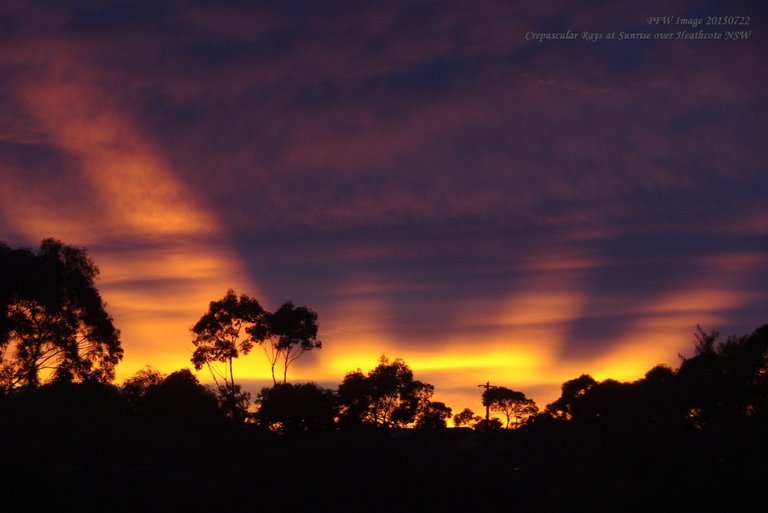
At times and if the conditions are right the rays can also be seen converging at the horizon in the direction opposite the setting (or rising) sun. When this occurs they are known as anitcrepuscular rays as the rays appear to converge at the anti-solar point. Figure 4 shows anitcrepuscular rays where they are converging in the eastern sky after sunset, in which the sky opposite sunset is naturally darker than in the direction of sunset.
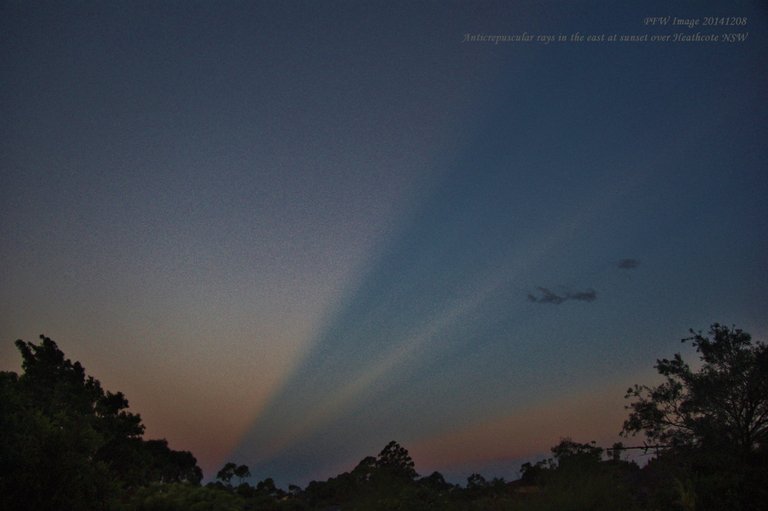
Another aspect of the crepuscular rays is that while they appear to converge at the setting or rising sun, they are in fact very nearly parallel and the convergence is an optical illusion of distance and perspective. The most often given example to demonstrate this with railway lines which we know are parallel but appear to converge in the distance, as shown in Figure 5.
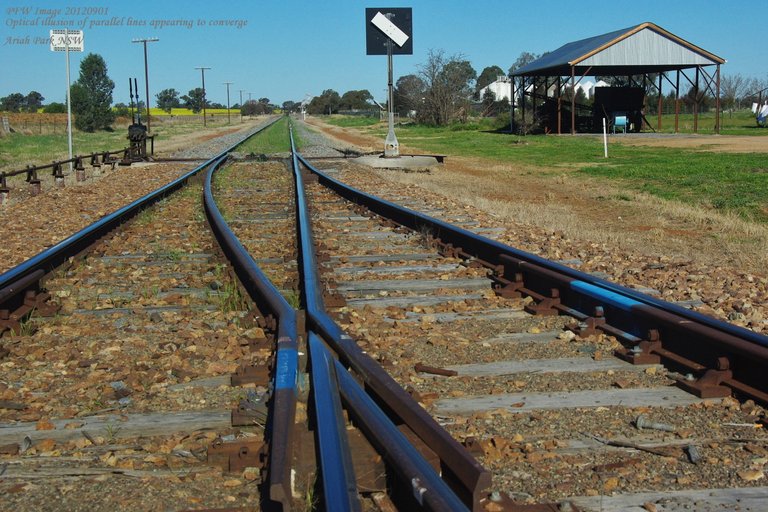
The visibility of crepuscular rays and anitcrepuscular rays is subject to the local conditions around the time of sunrise or sunset and most often one is visible but the other is not. Occasionally both are visible but not very often. On even rarer occasions it is possible to trace the rays through 180 degrees from one side horizon to the other. The short phone camera video here as Figure 6 follows the crepuscular rays in the west shortly after sunset past the zenith and down to the eastern horizon where I first noticed them as anti-crepuscular rays.
So, remember to always look up to see what nature has to show when next outdoors.
Posted with STEMGeeks
Congratulations @pfwaus! You have completed the following achievement on the Hive blockchain and have been rewarded with new badge(s) :
Your next target is to reach 600 upvotes.
You can view your badges on your board and compare yourself to others in the Ranking
If you no longer want to receive notifications, reply to this comment with the word
STOPCheck out the last post from @hivebuzz:
https://twitter.com/forexbrokr/status/1366570679059980289